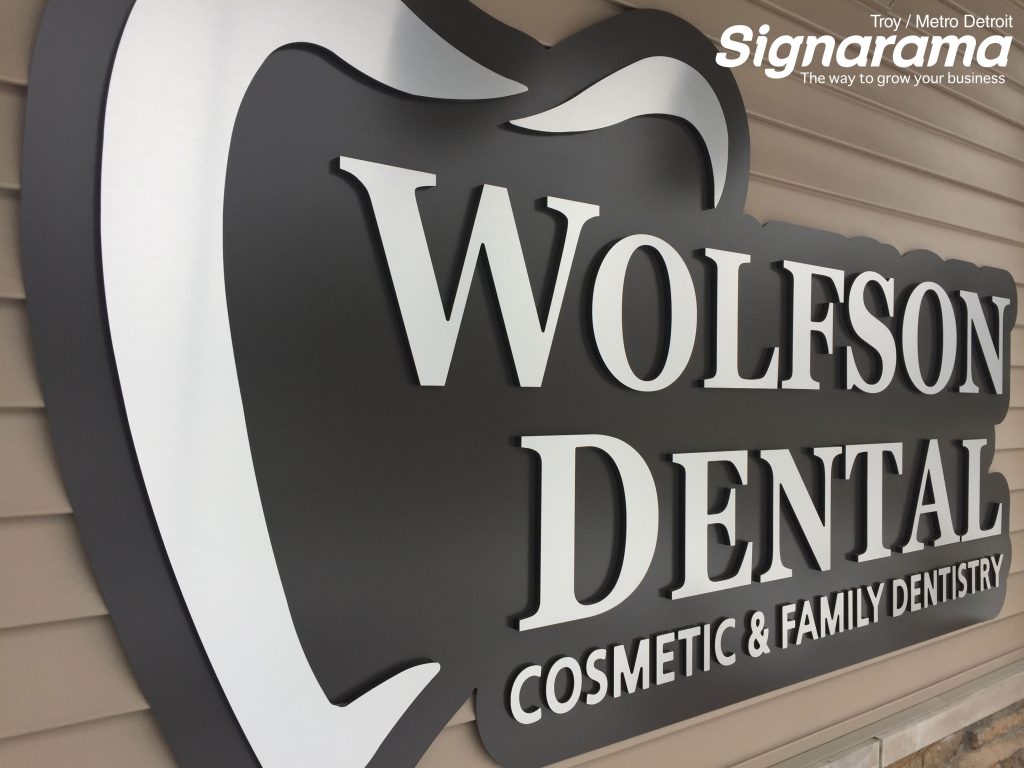As the brains behind your business or organization, you know it’s your job to present a good face for your group. And one of the ways you do that is through signs. Of course, great signage is a good start to sharing your name, mission, and goals. But even the best signage can take unexpected hits—from bad weather, bad actors, or any number of unforeseen events.
While you certainly don’t want your sign to be a victim of damage, you know it is possible at any time. Whether you’re currently facing damaged signage or you just want to be prepared, you’re wondering whether signs that have been injured can possibly be repaired. At what point is your signage no longer salvageable?
Your sign might be salvageable if…
Let’s take a look at a few scenarios in which your signage, though damaged, might not be as far gone as you think. Your sign might be salvageable if…
1 – Soap and water will do the trick
Sounds obvious right? But though the idea is simple, it’s good to keep in mind. While your signage might look like it’s in terrible shape, the reality may not be as bad as the appearance.
Try a bucket of hot soapy water (something simple like a tough-on-grease dish detergent with plain tap water). Just remember to check if your sign came with any special instructions prohibiting the use of certain cleaners or solvents. If so, you obviously want to steer clear of any cleaners that aren’t approved.
2 – It’s just dirt that needs a good scrub
You need to take stock of exactly what has damaged or dirtied your sign. If it’s only caked-on mud, chances are, you can wear it down over time with the proper cleaning tools. If you’ve been able to remove all the physical dirt, yet the dirt has left stains behind, now it’s time to pivot your approach to stain removal.
That’s when you break out a water and bleach solution and carefully spot test in a small area of the sign (preferably on the back or underside where it won’t be noticed). If the solution doesn’t damage the test area, scrub away at the stain with your bleach solution, then rinse with fresh water. Allow to dry, then take stock. If you’ve experienced sweet success at stain removal, take the process to the rest of the sign.
3 – You only need elbow grease with a proper abrasive instrument
Don’t forget that signs with metallic components may rust over time. But you may not need an entirely new sign. First, try removing the rust.

4 – The fix is simpler than it appears
Some sign damage solutions could be deceptively simple. For instance, if you have an illuminated sign cabinet that’s no longer illuminated, replacing the entire sign may not be necessary. If your sign company offers repairs, you may choose to have them come look at it. Perhaps they’ll simply need to replace some of the light bulbs.
No help available from the sign company? Don’t worry. Simply reach out to a qualified electrician and ask if he has any experience working with signage that has electrical components.
Do note that when you’re working with electrical signage, you want to beware of DIYing it unless you truly are qualified. It can be dangerous work, and wisdom often dictates that we leave it to the experts.
5 – Your sign might only need cleaning or disassembling
Another scenario where the fix could be simpler than you assume at first glance is when you have a sign that has simply degraded over time. For instance, signage with plastic parts may become discolored with age. Or, as we’ve all seen at one point or another signage with an empty interior cavity might acquire a curious collection of dead buds and small twigs. And that’s certainly not pleasing to the eye (or professional to your clients).
But the fix for the dead-bug problem could be as simple as disassembling your sign and cleaning it out. And other signs may just need some regular cleaning to give them a fresh face. Don’t overlook these mundane possibilities for refreshing your signs.
6 – Your sign isn’t as broken as it looks
Now, what if your sign has been the victim of some kind of trauma? Maybe a car has crashed into it or a tree limb has fallen on it. While these events can surely wreak havoc on a sign, they may not mean you have to totally replace the sign.
First off, take stock of the damage. Note exactly which parts of the sign are broken. Let’s take an example. In the case of a post and panel sign that’s been hit by a car, if the posts are broken off at the base (where they meet the ground), you may need new posts. But you won’t necessarily need a new sign face.

On the other hand, taking stock may reveal that your signage is too far gone to be replaced. For instance, if a tree limb has fallen on a monument sign and smashed it, you’re not necessarily going to be able to put the pieces back together.
Tailor the solutions to your signs
Please note that you need to choose solutions that are appropriate to the signage you have. And that means that instructions from your sign specialist or simply from the documentation that came with your sign should trump the foregoing ideas. While you can try other options, remember that any time you use methods that haven’t been approved for your sign, you run the risk of damaging it.
Choose signs responsibly
It’s a great idea to think about possible risks to your signs before you even purchase them. For instance, if you’ll be located in an area that has a significant problem with vandalism, taking that into account can help you make a better decision. Select signs that are tailored to the needs of your company or organization and to the needs of the community in which you’re located. Check out A Glossary Of Sign Definitions & The Distinctive Features Of Each to get a feel for your sign options.




